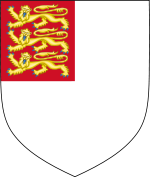*Image Credit: Wikimedia Commons Shortly after a lecture from Christopher Wren, the Gresham College astronomy professor, a dozen men committed to create “a College for the Promoting of Physico-Mathematicall Experimentall Learning.” What had been an informal gathering of scientific minds for more than a decade now had an official purpose, one that would lead to the formation of the Royal Society of London, arguably the most influential organization of its kind through more than four centuries. The seeds for the group were planted as early as 1645. Doctors and natural philosophers — the name given scientists in those days — gathered periodically to discuss ideas of all kinds relating to the study of the world around us, particularly the need for a regimented means to test their observations. Some time after King Charles II took the throne in 1660 at the close of the Wars of the Three Kingdoms, the men agreed to meet weekly for experiments and conversation. On November 28, 1660, some of the most eminent thinkers in the British Empire signed their names to an official declaration to promote the rigorous exploration of the natural world: Robert Boyle, who would go on to define early concepts in chemistry; Sir Robert Moray, a man of diverse interests with connections to the Crown; Wren himself, an architect and astronomer who would go on to oversee the design and construction of 50 churches after the Great Fire of London in 1666. Though some would argue the organization was spurred by the creation of the Montmor Academy in 1657 on the French side of the English Channel (Henry Oldenburg is a common connection), chemist Robert Hooke — the Society’s first Curator of Experiments — later insisted “the Society itself was begun before he came hither; and those who then knew Mr Oldenburg, understood well enough how little he himself knew of philosophic matter.” After first obtaining a charter from the king as a “Royal Society of London” in 1662, the organization received its official title in a second proclamation the following April. From 1663 onward, the organization has been known as “the Royal Society of London for the Improvement of Natural Knowledge.” Driven by a dearth of minds considered of a high enough quality to enter the exclusive club, the group slowly faded in importance over the next forty years until Sir Isaac Newton took on the leadership role in the early 1700s. Over the course of the next century, the Royal Society developed a codified system for choosing new fellows and membership grew. By the middle of the 1800s, the group shifted closer to its current position as the primary research arm of the British government, granting funds to researchers for new experiments and advanced equipment without influence from leadership in order to maintain loyalty to science instead of the Crown or Parliament. Now a group of nearly 1,500 Fellows and Foreign Members, the Royal Society claims luminaries such as Charles Darwin, Albert Einstein, Francis Crick and Stephen Hawking on its distinguished membership roll. One of its nine peer-reviewed journals, Philosophical Transactions of the Royal Society, is the oldest publication of its kind, first sent to print in March 1665. Also On This Day: 1520 – Ferdinand Magellan’s expedition passes into the Pacific Ocean, becoming the first European to do so from the Atlantic side of South America 1914 – The New York Stock Exchange opens after a five-month closure due to the start of World War I 1943 – United States President Franklin D. Roosevelt, Prime Minister of Britain Winston Churchill and Soviet Chairman Joseph Stalin meet for the Tehran Conference 1971 – Prime Minister of Jordan Wasfi al-Tal is assassinated by the Palestine Liberation Organization 1989 – The Communist Party of Czechoslovakia responds to massive demonstrations and declares it will give up its power
November 28 1660 – The Royal Society is Founded at Gresham College in London
*Image Credit: Wikimedia Commons Shortly after a lecture from Christopher Wren, the Gresham College astronomy professor, a dozen men committed to create “a College for the Promoting of Physico-Mathematicall Experimentall…
531
